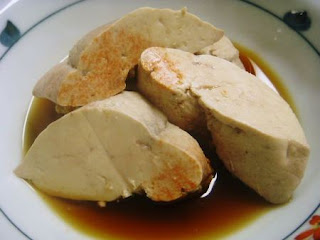 |
| The Serendipity3 "Haute-Dog" |
The Next Big Thing... Artisan Hot Dogs?
I normally try to set my culinary sites somewhere above a fancy hot-dog. With my experience and education i would hope that the direction of food isn't something so common but it would seem to be that exactly. According to a recent poll these gourmet wieners are looking like the future of high volume, short order restaurants and fine dinning establishments alike. On the foodfrenzy.com site they are currently hosting a poll asking what you think the next big food craze is going to be. Several options jumped out at me right away; gourmet sliders, innovative pies, food trucks and of course artisan hot-dogs. I voted dogs, checked the results and sure enough I was not alone.
Stuggy's in Baltimore boasts a bison-dog for $6.00 a la carte, while Senate Restaurant in Cincinnati offers the "Croque Madame", a $10.00 all beef hot dog with bechamel, black-forest ham, on a brioche bun topped with a poached egg... yikes. Last year the New York restaurant "Serendipity 3" introduced the Serendipity 3, foot long "Haute-dog". Grilled in white truffle-oil resting in a salted pretzel bun toasted with truffle butter and topped with chopped scallion and medallions of duck foie-gras, this fancy wiener is a winner at $70 a pop. "The Haute-dog" was awarded The Guiness Book's "worlds most expensive hot dog" title. Top it off with some heirloom tomato ketchup, truffle mustard and caramelized vidalia onions and you are ready for the best ball game ever. In Rhode Island, Massachusetts and Connecticut we have my personal favorite "Spike's Junkyard Dogs". Don't let the name fool you, Spike's has been doing the "fancy" hot dog thing since 1991 and I've been eating their 100% all beef dogs ever since. This place is a Rhode Island staple, anyone who claims they are from R.I. and doesn't know Spike's is probably lying or being sarcastic. Sure they don't have foie-gras on the menu but with their variety of 30 plus styles and endless topping options, Spike's is sure to please even the most sophisticated palate. Plus the prices at Spike's are also quite palatable.
If your culinary aspirations are similar to mine then hot dogs aren't even on your radar, trust this doesn't mean that fine dinning has gone out the window. We should all be aware of the latest food trends, in this industry, like any other, knowledge is power! Go eat a hot dog, it's what all the cool kids are doing! - K.C.C.
 |
| "Hey, look at me I'm Mr. Popular!" |
"http://www.senatepub.com/senate-pub-menu.html" "http://www.stuggys.com/""http://foodfrenzy.ocregister.com/2011/02/10/poll-whats-the-next-big-food-fad/33316/"



